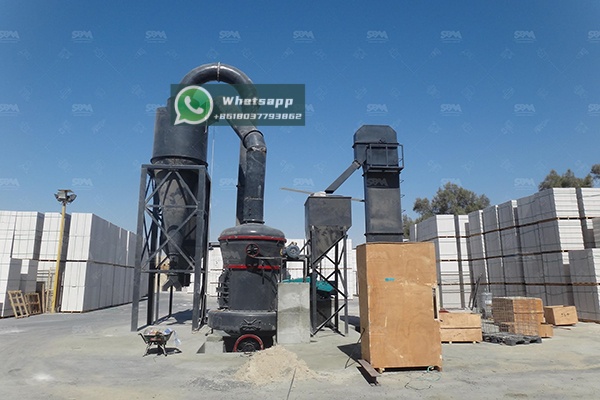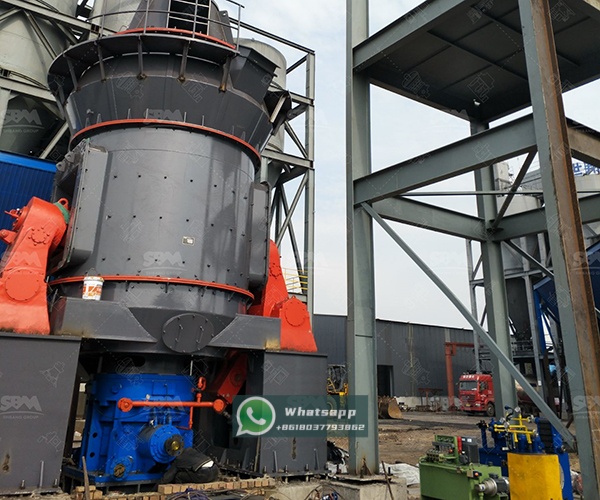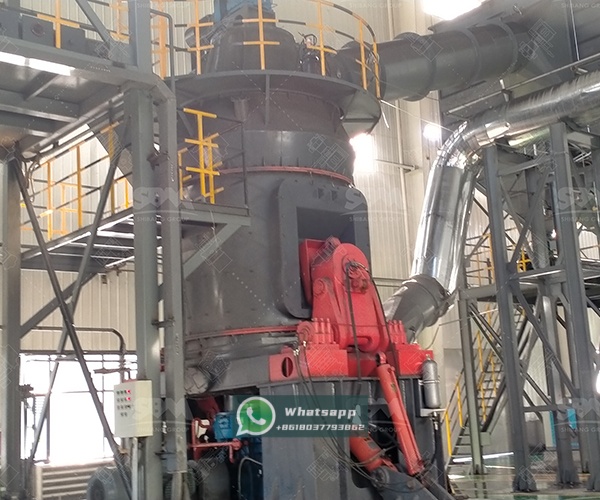The beneficiation of copper ore is a critical process in the mining industry, aimed at increasing the copper content and removing impurities to produce a concentrate suitable for smelting. As copper deposits become increasingly complex and lower in grade, the efficiency of grinding and liberation processes becomes paramount. Among the various grinding technologies available, vertical mill technology has emerged as a highly efficient and sustainable solution for copper ore processing.
Copper ore beneficiation typically involves a series of processes including crushing, grinding, flotation, and dewatering. The grinding stage is particularly crucial as it liberates the copper minerals from the gangue, creating particles of appropriate size for effective separation in subsequent flotation processes. Traditional grinding methods, such as ball mills and rod mills, have been widely used but often suffer from high energy consumption, significant wear rates, and limited efficiency in achieving the desired liberation.

Vertical mills offer several distinct advantages over conventional grinding systems in copper ore processing:
Shanghai Zenith Machinery Co., Ltd., as an excellent manufacturer of ore grinding equipment in China, has developed advanced vertical grinding mills specifically suited for copper ore beneficiation. The LM Vertical Grinding Mill represents a technological breakthrough in mineral processing, integrating five functions—crushing, grinding, powder selection, drying, and material conveying—into a single machine.
For copper ore applications, the LM Vertical Grinding Mill offers exceptional performance characteristics:
| Model | Plate diameter (mm) | Capacity (t/h) | Output fineness (μm) | Max feed size (mm) | Main motor (kW) |
|---|---|---|---|---|---|
| LM130K | 1300 | 10-28 | 170-40 | <38 | 200 |
| LM190K | 1900 | 23-68 | 170-40 | <45 | 500 |
| LM280K | 2800 | 50-170 | 170-45 | <50 | 1250 |
The LM series utilizes a grinding table and rollers that operate under hydraulic pressure, providing consistent grinding force and maintaining performance even as components wear. The integrated classifier ensures precise control over product fineness, which is critical for optimizing copper recovery in flotation circuits.

For operations requiring ultra-fine grinding to liberate finely disseminated copper minerals, Zenith’s LUM Ultrafine Vertical Mill offers superior performance. This advanced mill is particularly effective for processing complex copper ores where conventional grinding fails to achieve adequate liberation.
The LUM series features several technological innovations that benefit copper ore processing:
| Model | Main machine power (kW) | Capacity (t/h) | Size distribution D97 (μm) |
|---|---|---|---|
| LUM1525 | 220-250 | 1.6-11.5 | 5-30 |
| LUM1632 | 280-315 | 2.0-13.5 | 5-30 |
| LUM1836 | 355-400 | 2.3-15 | 5-30 |
Successful implementation of vertical mill technology in copper beneficiation requires careful consideration of several factors:
Feed Characteristics: The abrasiveness and moisture content of the copper ore significantly impact mill performance and wear rates. Zenith’s vertical mills are designed with wear-resistant materials in critical areas to handle abrasive copper ores effectively.
Circuit Configuration: Vertical mills can be operated in open or closed circuit configurations. For copper ore applications, closed-circuit operation with external classification typically provides the best balance between throughput and product quality.
Maintenance Strategy: While vertical mills generally require less maintenance than traditional grinding mills, a proactive maintenance approach is essential for maximizing availability and performance. Zenith provides comprehensive technical support and spare parts services to ensure optimal operation.
Process Control: Advanced control systems that monitor and adjust operating parameters in real-time are crucial for maintaining stable operation and consistent product quality.

A major copper producer in South America recently replaced two traditional ball mills with a single Zenith LM190K Vertical Grinding Mill in their secondary grinding circuit. The results demonstrated significant improvements:
The successful implementation highlights the potential of vertical mill technology to transform copper ore processing operations, delivering both economic and environmental benefits.
The evolution of vertical mill technology continues, with several emerging trends likely to shape future applications in copper beneficiation:
Digitalization and IoT Integration: Advanced sensors and data analytics enable predictive maintenance and optimization of mill performance, reducing unplanned downtime and improving efficiency.
Hybrid Grinding Circuits: Combinations of vertical mills with other grinding technologies, such as high-pressure grinding rolls (HPGR), offer potential for further optimization of energy efficiency and product quality.
Sustainable Operation: Continued focus on reducing energy and water consumption aligns with the mining industry’s sustainability goals, positioning vertical mills as a key technology for responsible mineral processing.
Adaptation to Complex Ores: As copper deposits become more challenging to process, vertical mill technology is being adapted to handle higher clay content, variable hardness, and more complex mineralogy.
Vertical mill technology represents a significant advancement in copper ore beneficiation, offering substantial benefits in energy efficiency, operational cost reduction, and environmental performance. Shanghai Zenith Machinery’s LM Vertical Grinding Mill and LUM Ultrafine Vertical Mill provide copper processors with reliable, high-performance solutions that address the challenges of modern mineral processing.
As the copper industry continues to face pressure to improve efficiency and reduce environmental impact, the adoption of advanced grinding technologies like vertical mills will play an increasingly important role in maintaining competitiveness and sustainability. With continuous innovation and proven performance in operations worldwide, Zenith’s vertical grinding solutions are well-positioned to support the evolving needs of the global copper industry.